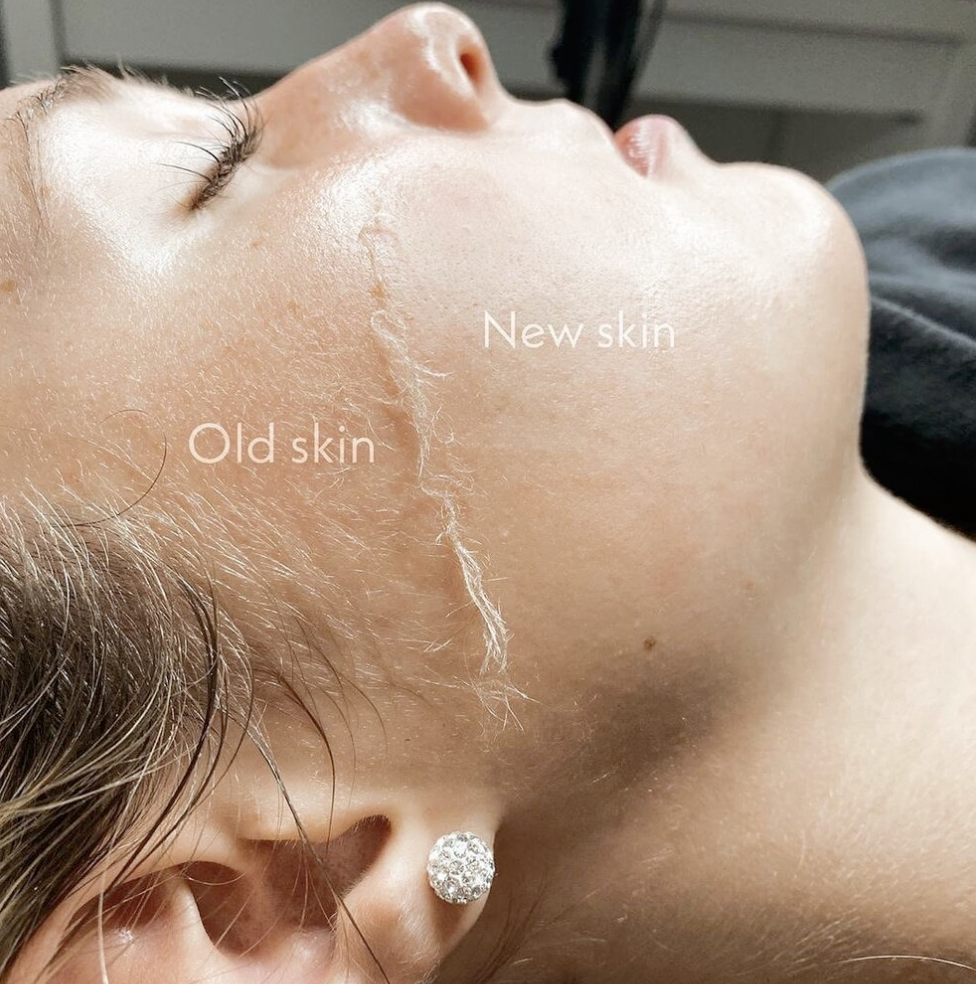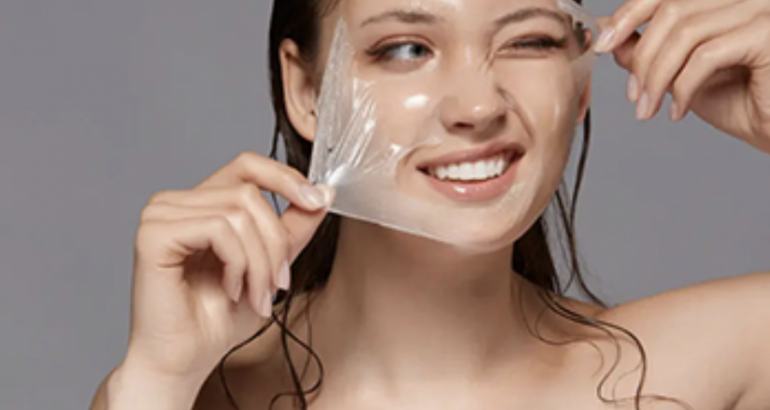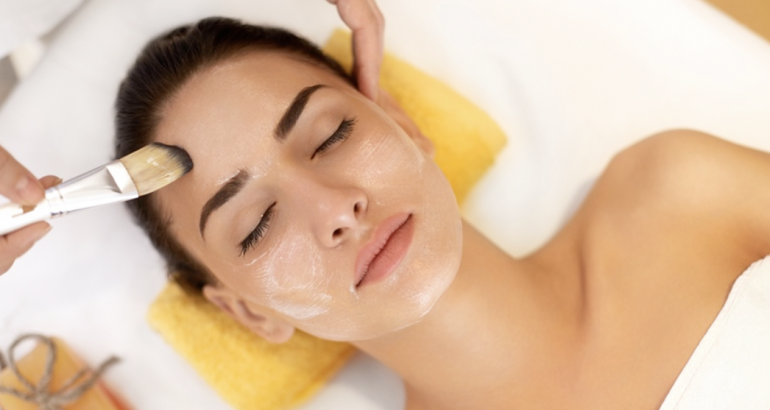What is dermaplaning?
Facial dermaplaning is a cosmetic procedure that involves gently scraping your face with a scalpel to remove the epidermis—your top layer of skin—and small hairs. During a dermaplaning session performed by an expert, (often a licensed esthetician) uses a medical-grade scalpel to scrape across the surface of the skin. The treatment typically takes about 15 to 30 minutes. At Cosmetic Lounge, this can be scheduled by itself, or added onto almost any facial. Just let us know ahead of time so we can schedule appropriately.
Is dermaplaning the same as shaving?
Not exactly. Facial dermaplaning does involve shaving off layers of skin—primarily just that upper epidermis, the very top layer. That exfoliating effect is why dermaplaning is often done in combination with facials.
With an in-office dermaplaning procedure, professionals typically use a no. 10 scalpel blade, whereas shaving entails a straight razor blade or a three- to five-blade razor. Another key distinction: Shaving is meant for hair removal, not exfoliation—it only cuts hair at the skin level, and should not remove any layers of skin.
One more difference with dermaplaning is that the scalpel also allows for a smoother, closer removal of those tiny, fine facial hairs known as peach fuzz, since the blades aren’t guarded like a body-hair razor is.
What are the benefits of dermaplaning?
It can remove peach fuzz.
The main reason people do it is to remove the vellus hairs on their faces, which, again, some people refer to as peach fuzz. Everyone has these fine vellus hairs coating their bodies, and they serve a purpose: Vellus hairs keep us warm and add another layer of protection to the skin. But some people’s vellus hairs are thicker and/or darker (so more visible) than others, and depending on how they feel about that, they might want to have them removed. Removing peach fuzz with dermaplaning also allows makeup to go on much smoother, and can make skin look and feel more rejuvenated.
You may have heard that shaving hair on your face makes hair grow back thicker—that’s technically not true. But it may look thicker or darker since shaving can cause hairs to have a blunter tip as they grow out. The hair doesn’t typically grow back thicker or darker following an in-office dermaplaning session that was done with a precise scalpel.
People might also try laser hair removal for longer-lasting results. But note that your hair can still grow back with this method, it takes several sessions to see changes, the cost per session ranges can be expensive, and people with darker skin are generally more prone to hyperpigmentation (dark spots) and burning after laser hair removal compared to people with lighter skin.
And it can also help exfoliate your skin.
While the most common reason people choose dermaplaning is to remove vellus hairs, the blade also gets rid of a superficial layer of dead skin called the stratum corneum. This can make your skin look brighter, help your skin-care products sink in better, and help your foundation go on smoother. Dermaplaning is often an add-on done before other treatments like Microdermabrasion or Hydrafacial in order to get a jump-start and exfoliate the top layer of dead skin cells before these exfoliating procedures.
What are the cons of dermaplaning?
While it might feel like getting rid of these hairs is easy to do at home with an inexpensive blade, most professionals warn against it if you have the option of seeing a professional for the treatment. Any blade you get over the counter won’t be as sharp—or as effective—as the medical-grade scalpel used at a professional’s office. And there’s always a chance that you’ll cut yourself in the process of dermaplaning your own skin (since you’re not trained to perform the procedure), potentially causing scarring. Anytime a sharp object goes near your face, there is a risk of damage to the skin.
How often should you do a dermaplaning session?
In order to keep the hair away, you might have to get treated about once a month. (Of course, the exact timeline will look different for each person.) This is not a treatment you should do too frequently. Your epidermis helps protect you from allergens and other potential irritants in the outside world—dermaplaning too often may irritate or damage that top layer of protection. It’s best to consult with a professional who can help you decide on the appropriate frequency for your skin and needs.
How to take care of your skin before and after a dermaplaning session
For the best exfoliation results, it’s smart to prep your skin by steaming your face—either as part of your in-office treatment or with an at-home steaming method, like hopping in a hot shower—before a dermaplaning session. The heat will loosen dirt and sebum and help to remove the dead skin cells easier. It also makes the skin more pliable, softer, and the vellus hairs easier to remove.
Rehydrating your skin post-dermaplaning is just as important in order to protect the epidermal barrier you’re exfoliating. Since you’re removing that layer of dead skin cells and stripping the skin of that outer protective barrier, you’ll want to wash your skin with a gentle cleanser and then apply a rich moisturizer (think hydrating, skin barrier-protecting ingredients like hyaluronic acid and strengthening ceramides).
You’ll want to continue moisturizing for a couple of weeks too. Since the skin cells in the epidermis take about 14 days to turn over (or up to 40 to 50 days as you age) and create a new outer layer of skin, it’s important to moisturize your face to replenish the barrier of the skin that was just removed.
After a dermaplaning treatment, you should also stay out of the sun as much as possible until your skin barrier restores and you stop seeing redness, tenderness, or swelling. You have to coat your skin with sunscreen afterward because you’re going to be more sensitive to the sun. The exfoliation exposes a new layer of skin that isn’t typically exposed to sunlight, so it can more easily cause U.V. damage. You also have to be cautious of retinol and glycolic acids for that same reason.
When should you avoid dermaplaning?
There are a few instances where you should think twice before signing up for a dermaplaning facial or other dermaplaning treatment. For one, you’ll want to avoid dermaplaning if you’re experiencing active acne, rosacea, psoriasis, or eczema flare-up since the treatment could cause further irritation and excessive skin peeling. There’s also a chance that the blade could nick a pimple which means it would take longer to heal.
The bottom line: Consulting with a professional will help ensure the safest possible dermaplaning experience—and the best, most glowing results.




